
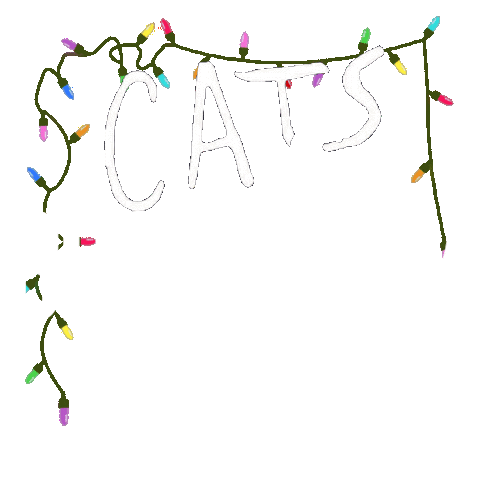

It’s been 20 years now since the original CATS on Broadway has closed. Video of the Broadway production is scant, and the only known full length video of the musical exists only with the New York Public Library, meaning most of us won’t ever be able to see it. For a long time, the Broadway version of the show was the most well known- and the one that other shows internationally were modelled off of. After the release of the 1998 film and the subsequent closing of the Broadway show, the London version of the production shown in the film became what the public was more likely to recognize, and the one that modern shows model themselves off of. Of course, Broadway did influence quite a bit of London’s show by the time CATS ‘98 was filmed, so elements of Broadway still exist, but many elements of it are being lost as shows move away from that direction. It’s by no means a bad thing, both versions of the show are excellent, however I think it’s interesting to take a look back at what CATS on Broadway was like.

The London production had a troubled start, but once the show started rolling, it was a major hit. Many people wanted to take the show to Broadway, and a bidding war ensued. Eventually The Shubert Organization and David Geffen won the rights to do it. The production had a breathtaking budget- four and a half million dollars. This was the most expensive show in the history of Broadway at the time. With money like this, they could make it bigger and better, and so, they got to work.
The Winter Garden Theatre was secured for the show, and though is had gone through a recent renovation, the entire theatre was gutted to make way for CATS. The overhaul was drastic, resulting in an almost entirely themed theatre for a fully immersive experience. The proscenium arch was removed, and the stage was brought forward so it could be performed in the round like the London production had done. Because this removed rows of seats, several seats were added onto the stage, covered in junk so they blended right in.
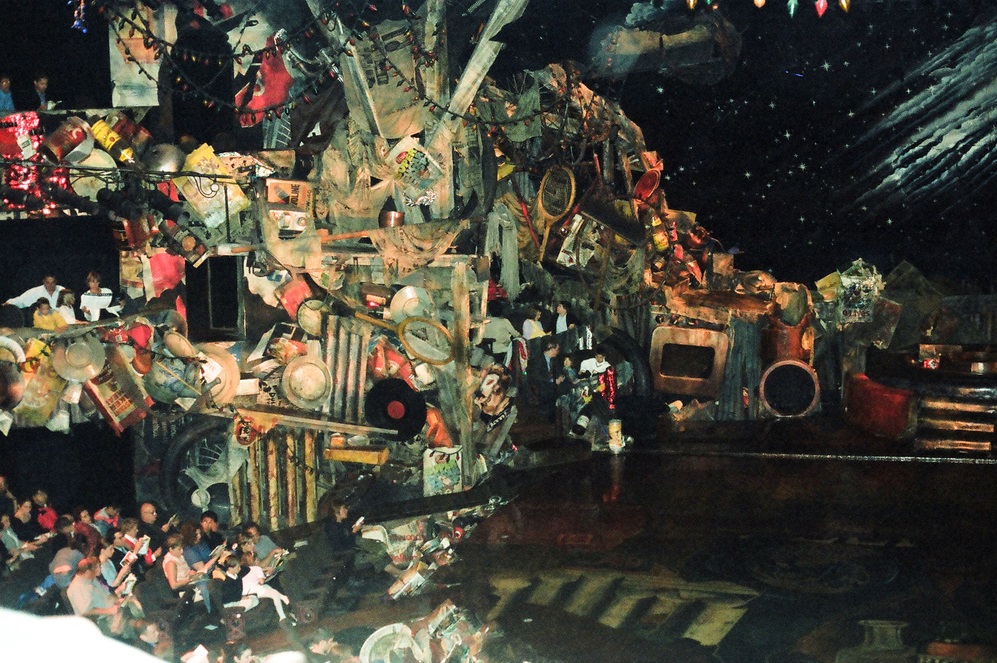
A photo of the on-stage seating and the junk-covered balconies
There were over 2,500 pieces of oversized junk that made up the set, extending all the way into the orchestra and onto the balconies. Several of the set pieces moved on hydraulic lifts, not just the tire. And the spectacle didn’t stop there, the roof was lowered and turned into a glittery canopy of stars that hung over the stage. The entire theater had been painted black too to aid in the nighttime feel. Giant Christmas lights were strung over the stage and the entire theater, giving a magical touch to the environment. For the Growltiger scene, the back part of the set would open out, revealing a pirate ship, and the back wall folded down to cover the junkyard, giving it an entirely new look.

The stage with the night sky painting and Christmas lights

The Growltiger ship
While many of the performances themselves could’ve been said to “blow the roof off the place”, the renovations had already done that for them. In order for Grizabella to ascend to the Heaviside Layer at the end of the show, A six foot square hole had to be cut through the decorative plaster ceiling of the Winter Garden. A dome was built on the roof with a small room inside which Grizabella would ascend into.
The set was a marvel, so of course the cast would have to be as well. Before CATS had even begun the process of coming to America, it was already widely known it would be a hit. The cast album had been released, and people all over the US were curious about the show, so when the advertisements for casting went up, actors flocked to them. The auditions were grueling as the dance moves were difficult and Gillian Lynn, Trevor Nunn, and Andrew Lloyd Webber would only come over from England to audition people for short amounts of time, meaning the process took a long time. But eventually the parts were cast, and rehearsals began.
Such an unusual show required unusual rehearsal techniques. For much of the first rehearsals, the cast were given exercises to help them behave like cats. The goal was them to truly feel like cats, and be able to behave as such naturally. They were even instructed to study cats and mimic anything they thought was funny or of note. Not everyone enjoyed this process, and one actress ended up leaving during it. She was replaced by Marlene Danielle who stayed with the production for the entire 18 year run.
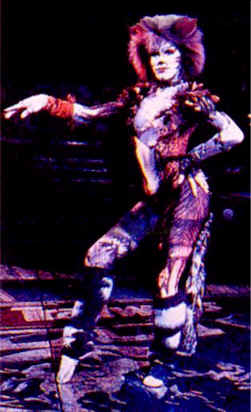
Marlene Danielle
The show was already a hit before it had even opened. It saw $6.2 million dollars in ticket presales, guaranteeing it a multi-year run before it had even began. The hype for the show was massive, and opening night did not disappoint. Well, it disappointed the critics, but not even bad reviews could stop CATS’ success. On the posters where most musicals put a reviewer’s quote, they instead opted to simply put “Now and Forever” as was suggested by Nancy Coyne. It was a bold statement. No matter what the critics said, CATS was here, now and forever.
CATS pulled in massive crowds, and many of those crowds were star studded. In just the early days alone, the show was seen by the likes of Gregory Peck, Frank Zappa, Cary Grant, Michael Jackson, and more! The show made half a million dollars in profit a week, and recouped the investment in just 41 weeks.

When CATS was brought to Broadway, several changes were made. The set and costumes were different, of course. Many of the costumes for Broadway were redesigned, though some only subtly. They weren’t wildly different from London’s, but over the years each would evolve quite differently, resulting in distinct and unique looks.

The original Broadway cast in their costumes and makeup
The show saw several verses cuts, as critics had complained that the London version, with a running time of 3 hours, was too long. The songs that had verses cut were Jellicle Songs For Jellicle Cats, The Old Gumbie Cat, Bustopher Jones, Mungojerrie and Rumpleteazer, Old Deuteronomy, and the Ad-Dressing of Cats. Lyrical changes were made to Invitation to the Jellicle Ball, with the cats repeating the words Mistoffelees sang instead of an excerpt from Song of the Jellicles. Many of these changes were brought over to London and have become the versions of the songs we recognize today.
Two songs received complete overhauls, these being Mungojerrie and Rumpleteazer and the lover’s duet in Growltiger’s last stand. Mungojerrie and Rumpleteazer became the upbeat version we know today instead of the jazzy version from the London production, however there was a very strange difference. Instead of having Mungojerrie and Rumpleteazer as actual characters, they were instead puppets made of trash that had been brought to life by Mistoffelees to entertain Bustopher Jones. Mistoffelees sang the song, and the lyrics were changed to be in third person and past tense. The trash puppets were played by the dancers who played Coricopat and Etcetera, and would appear from the trunk of the car. Because of this, the Macavity scare didn’t happen before the song and instead happened after. This was changed in 1987 when they finally introduced Mungojerrie and Rumpleteazer as actual characters and had them sing their own song. Carbucketty and Etcetera were cut from the show to make room for them. Interestingly, Rumpleteazer inherited Etcetera’s paler design after the cut.

Trash puppet Mungojerrie and Rumpleteazer dancing with Mistoffelees
The lover’s duet in Growltiger’s Last Stand was The Ballad of Billy Mc’Caw in London, but when it was brought to Broadway it was changed to In Una Teppida Notte, which is an Italian translation of a portion of the Growltiger poem. The staging of this number was changed to be a more comedic slapstick approach as Growltiger and Griddlebone attempt to upstage each other.
Other changes were with characters. George, Electra, and Victor were cut, while Pouncival was introduced. A few name changes were made as well, with Jemima becoming Sillabub, Admetus becoming Plato, Bill Bailey becoming Tumblebrutus, and Gilbert becoming Ghengis. Some roles were moved around to different characters, as well. The terrible bore line was sung by Mistoffelees, Munkustrap, and Alonzo. Old Deuteronomy was sung by Munkustrap and Rum Tum Tugger instead of Skimbleshanks, George, and Mistoffelees. Tumblebrutus danced the pas de deux with Victoria. Alonzo did the majority of the Macavity fight and later is the one who has a moment with Demeter in the spotlight. Mistoffelees sang part of his own song, instead of it all being sung by Tugger. At the very beginning of the Broadway run, Sillabub's part of Memory was actually sung by Victoria. The voice on the Broadway album is that of Cynthia Onrubia who played Victoria, and she can also be heard on an audio bootleg that was recorded during previews for the show. By the time of the Tony's performance, the part had been changed to Sillabub, however when they recorded a performance for the Macy's Day Parade later that same year, the part was lipsynced by Cynthia Onrubia as Victoria since they were using the Broadway album version of the song and not singing live.
In the early days of Broadway, the swings were given their own individual costumes. These costumes did not change when they were covering ensemble/supporting roles. This means that ensemble/supporting characters would always look different depending on which swing was playing them.
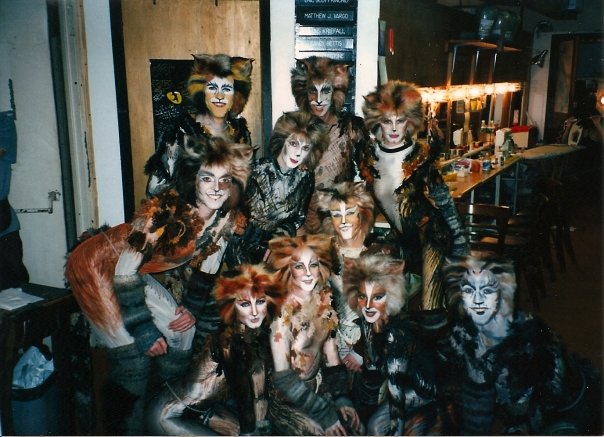
Some of the Broadway swing costumes

Bad reviews are nothing new to CATS. They’ve been around since the beginning, and continue to crop up with every new iteration that comes around. Broadway, of course, was swamped with them immediately. When CATS opened on Broadway, the megamusical wasn’t a thing. People weren’t used to seeing such bombastic sets and heighted interactions. CATS wasn’t just a musical, it was an experience.
And critics did not like that.
Many of the reviews from when it first opened heavily criticized it, saying it was a gimmick. The stage was too big, the effects were too fantastical, and the plot just didn’t stand up in comparison. CATS made megamusicals a staple, and as other musicals got bigger and wilder, CATS looked smaller in comparison. As the years went on, some reviews turned from “the set is too much” to “the set isn’t enough”. The reviews also went in on the plot, saying that if there was one, it wasn’t much of one. They said the songs dragged on, and the show moved slowly.
But even the bad reviews mentioned that CATS on Broadway took the audience to an entirely different world. From the moment you stepped in the theatre, you were immersed. There was nothing else like it on Broadway. Many of them admitted, begrudgingly, I’m sure, that there was something special to CATS.

Apart from being immersed by the impressive set, CATS also had a high level of interaction with the cats and the audience. This is true for most productions of CATS, but the Winter Garden took it up a notch and had tunnels leading from the basement into the audience. Cats would pop out of these and crawl through the audience, with some of them even crawling up to the balconies on a ramp, and then across the railings of the balconies. The audience was asked not to put anything on it, but they often did. Some actors had fun knocking drinks off of it and into people’s laps. Being on the railings was dangerous, especially the ones that were over the orchestra pit.
They had many issues with mics in the early days. A lot of the time, mics would stop working because of the sweat that would drench them. Eventually they began to use condoms to protect the mic packs. By the time CATS closed, they had gone through 59,705 condoms.
CATS became the longest running show in Broadway history on June 19th, 1997. They broke the record with a whopping 6,138 performances, and held it until they closed. Phantom of the Opera has since surpassed CATS’ record, and a special ceremony was held when that happened where an actress dressed as Victoria symbolically passed the torch on by putting her hand in the phantom’s just as she does with Grizabella. It is currently Broadway’s 4th longest running musical.
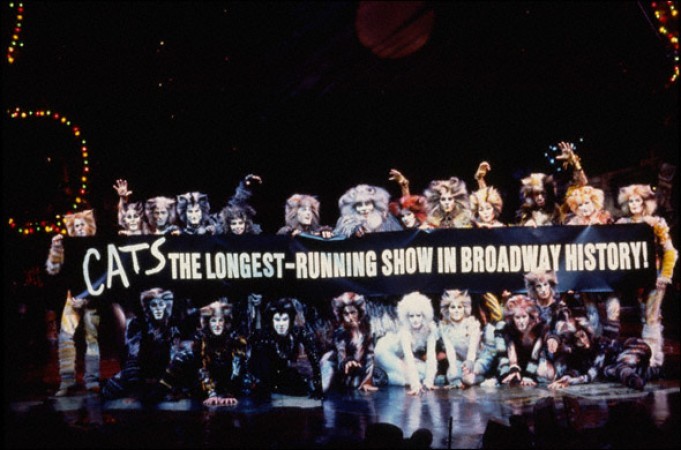
The cast of the performance that broke the record
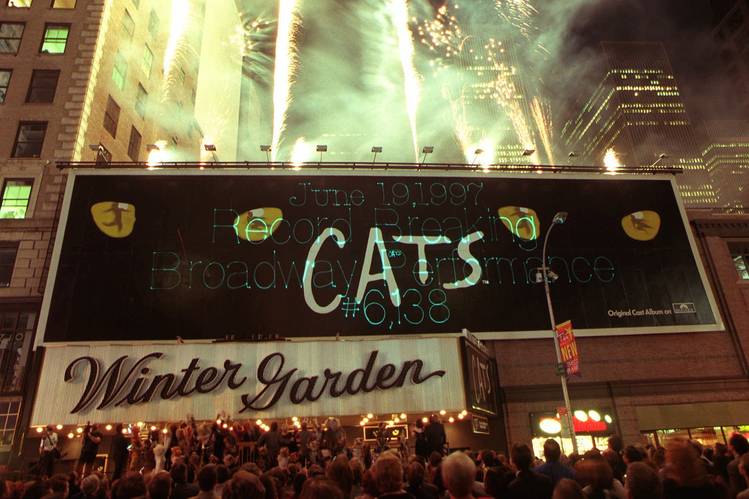
The front of the Winter Garden after the performance
Marlene Danielle was famously in the show for the entire 18 year run, playing a swing in her first year and then Bombalurina for the rest of it. Another long-standing member of the CATS Broadway cast was Susan Powers, who was in the show from the beginning in 1982 up until 1997. She played Jennyanydots several times, but mainly was a part of the offstage chorus and an understudy.
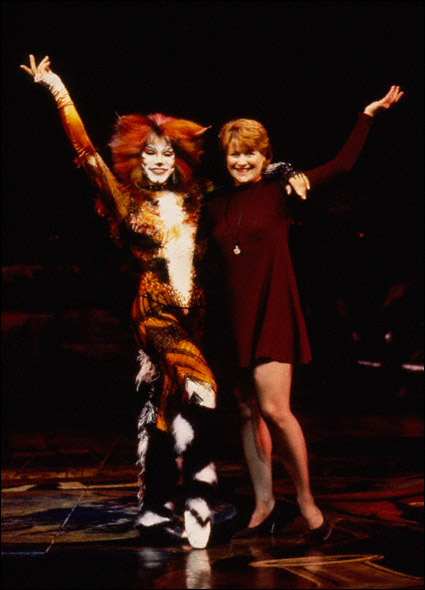
Marlene Danielle and Susan Powers
CATS became a pop culture icon, and the Broadway show in particular has been referenced quite a bit in media. Though there was an overdose of CATS everywhere in its prime, no one saw more of it than New York. CATS commercials were constantly seen on the airwaves in New York, and the iconic CATS poster was seen just about everywhere. Over 2,000 of those posters were printed yearly, and were plastered in subways, railway routes, and all over the theater district. And of course, the giant CATS marquee outside the Winter Garden was a staple of Broadway.
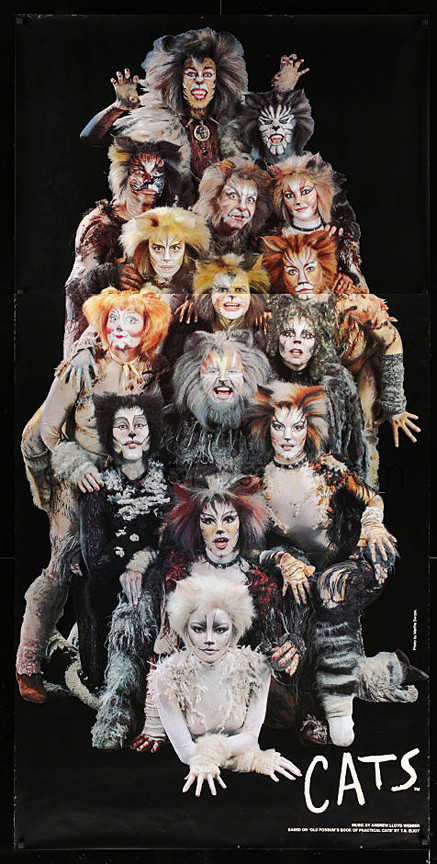
The iconic CATS poster
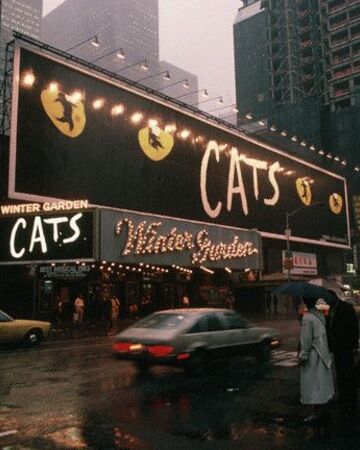
The Winter Garden with its gigantic CATS marquee
In 1997, CATS had a total economic impact on New York City of 3.12 million dollars. It was the largest generator of income and jobs in Broadway history at the time that it closed. It also helped establish that tourism could support a musical as people continued to flood into New York to see the show for years on end. CATS donated more than 50,000 tickets to New York public schools and to organizations like Big Brother/Big Sister.
In 1983, CATS on Broadway won seven Tony Awards out of eleven total nominations. The categories won were Best Musical, Best Book of a Musical, Best Original Score, Best Performance of a Features Actress in a Musical, Best Direction of a Musical, Best Costume Design, Best Lighting Design, and Best Cast Show Album.
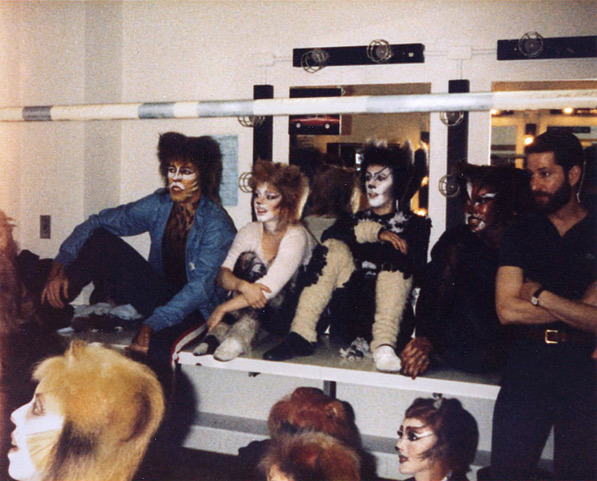
The cast backstage at the Tonys

On February 19th, 2000, news broke that CATS was closing. Though it was originally scheduled to close on June 25th, 2000, the high ticket sales that resulted from the announcement of its closure convinced them to extend the show’s run until September 10th. In just a month after the closure, 4.17 million dollars worth of tickets were sold. Fans and first time viewers all flooded the Winter Garden night after night that summer, catching one last glance of the musical that had reshaped Broadway.
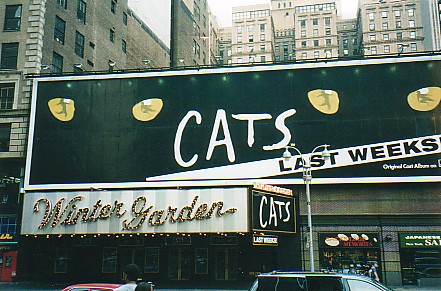
The Winter Garden in its final weeks hosting CATS
The third-to-last performance saw an audience filled with CATS alumni, while the second-to-last performance was a benefit for the Actors’ Fund, and the final performance was invitation-only. After the final performance, a “Jellicle Ball” party was held at Pier Sixty, where fireworks were shot off in honor of the show.
About the closing, Andrew Lloyd Webber said “Eighteen is a great age for a cat.” The final playbill featured a tear dropping from the cat eye logo, and proudly stated that CATS was “the most popular theatrical presentation in history.”

After all was said and done, several things from the production were donated to the Smithsonian, and the rest were sold and auctioned off on September 16th. Everything from costumes to the giant tire were up for grabs for fans. All proceeds went to Broadway Cares/Equity Fights AIDS.
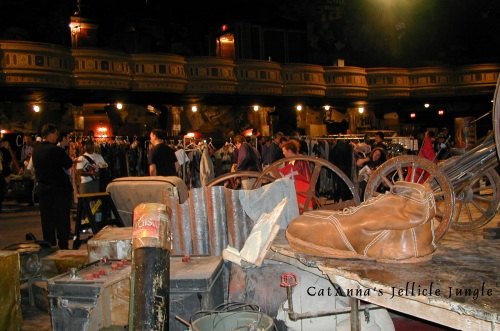
A picture of the "garage sale" held at the Winter Garden from CatAnna's site. Click the image to go to her site and read about her experience
CATS on Broadway may be gone, but their slogan still rings true. CATS continues to be performed all over the world with no end in sight. It remains a beloved, if commonly maligned musical, and it remains in all of our hearts. Now and Forever.

